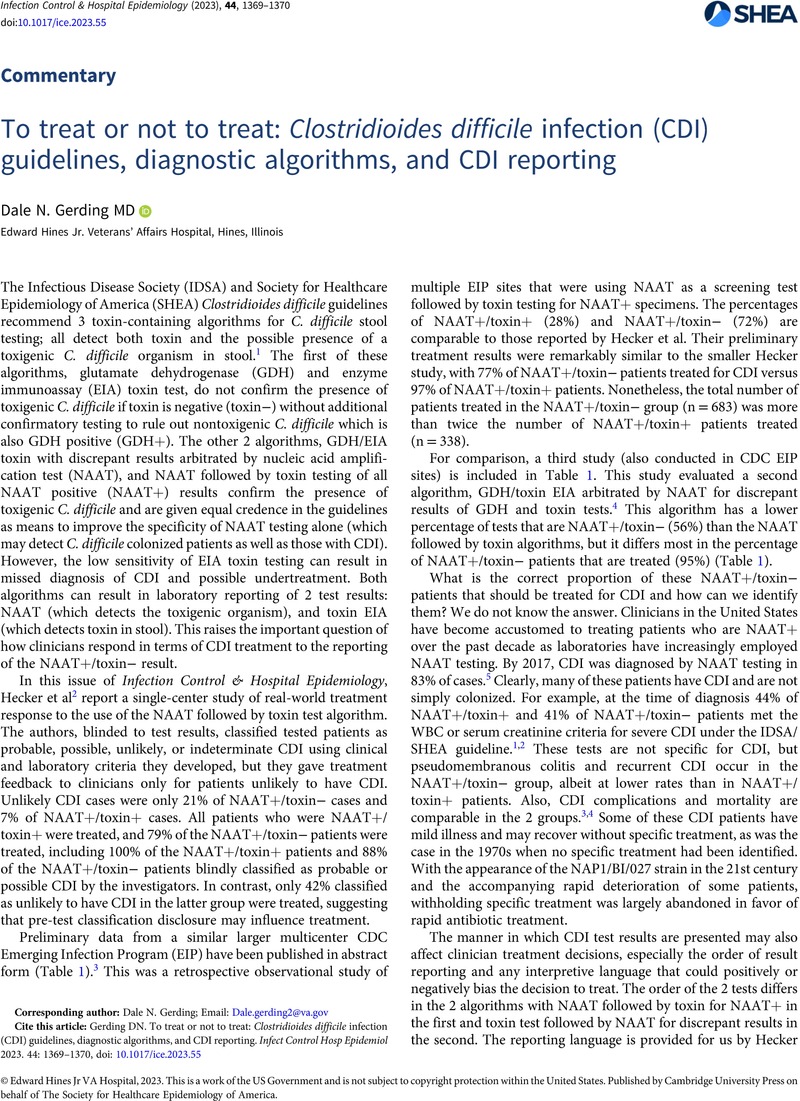Crossref Citations
This article has been cited by the following publications. This list is generated based on data provided by Crossref.
Guh, Alice Y.
Fridkin, Scott
Goodenough, Dana
Winston, Lisa G.
Johnston, Helen
Basiliere, Elizabeth
Olson, Danyel
Wilson, Christopher D.
Watkins, Jasmine J.
Korhonen, Lauren
and
Gerding, Dale N.
2024.
Potential underreporting of treated patients using a Clostridioides difficile testing algorithm that screens with a nucleic acid amplification test.
Infection Control & Hospital Epidemiology,
Vol. 45,
Issue. 5,
p.
590.
Huletsky, Ann
Loo, Vivian G.
Longtin, Yves
Longtin, Jean
Trottier, Sylvie
Tremblay, Cécile L.
Gilca, Rodica
Lavallée, Christian
Brochu, Éliel
Bérubé, Ève
Bastien, Martine
Bernier, Marthe
Gagnon, Martin
Frenette, Johanne
Bestman-Smith, Julie
Deschênes, Louise
Bergeron, Michel G.
and
Wyllie, Anne L.
2024.
Comparison of rectal swabs and fecal samples for the detection of
Clostridioides difficile
infections with a new in-house PCR assay
.
Microbiology Spectrum,
Vol. 12,
Issue. 6,
Viprey, Virginie F.
Clark, Emma
and
Davies, Kerrie A.
2024.
Diagnosis of Clostridioides difficile infection and impact of testing
.
Journal of Medical Microbiology
,
Vol. 73,
Issue. 12,



